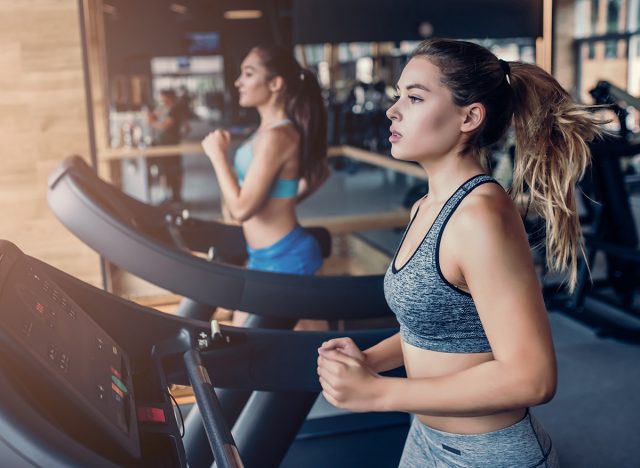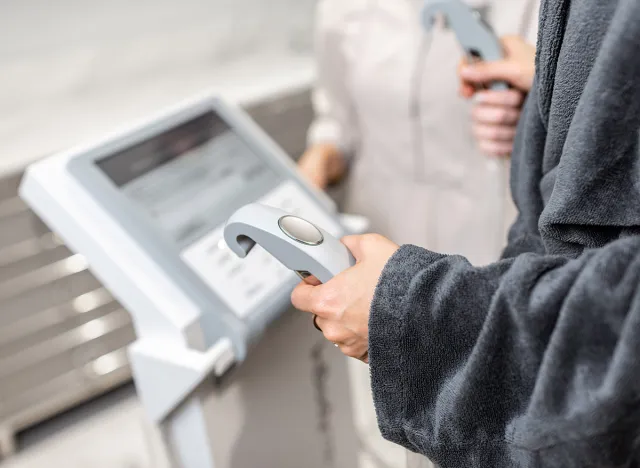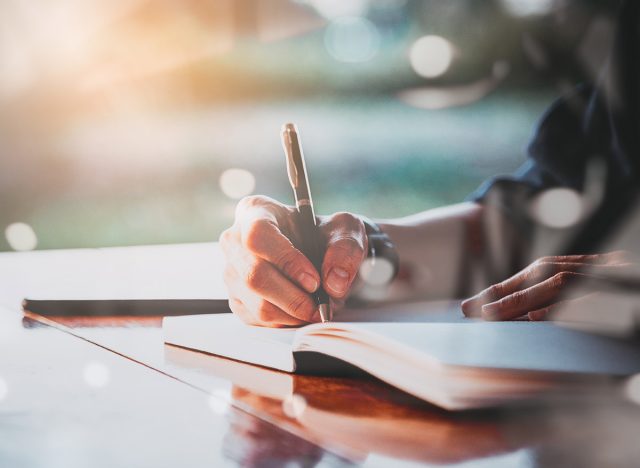Benchmark Your Progress With Our Lean Body Mass Calculator

Do you know what your body is really made of? And do you know how the distribution of your body tissue affects your weight, nutrition, and the exercises that are most effective for you? If you are looking to improve your health and fitness, understanding the answers to these questions can be incredibly impactful. One tool that can help you with this process is the Lean Body Mass Calculator. This online calculator requires only a few measurements from you to estimate your lean body mass and fat mass percentages.
Most people believe that lean body mass (LBM) is only skeletal muscle, but it is much more than that. It includes muscle but also water, organs and bones. Essentially, it is all body mass except for fat mass. Lean body mass is metabolically active, which means it needs nutrition for maintenance, growth, and repair. This is key when developing an exercise and nutrition plan to meet your goals.
The Lean Body Mass Calculator is a great tool to assist in your fitness journey. By having information about what your body is made of, programming for exercise and nutrition is more specific and effective. Improving or increasing lean body mass will improve health, longevity, fitness and overall function. Using this calculator as part of your fitness regime will provide you with valuable information to enhance your success. Here's everything you need to know about the Lean Body Mass Calculator and how it might work for you.
Introduction to Lean Body Mass

What is lean body mass, and why is it important to know your LBM? Lean body mass is not only the weight of one's muscle mass but it also includes the combined weight of bones, ligaments and tendons, internal organs, and water. In other words, "Lean body mass differs from total body weight because it does not include fat mass. Total body weight = lean body mass + fat mass," says Jordan Hill, MCD, RD, CSSD, of Top Nutrition Coaching, a Lead Registered Dietitian.
"A healthy LBM is between 70%-90%," says Nadia Murdock, a Mindset & Movement Coach at Garage Gym Reviews. "For women ideally it should be on the longer end of the range and men on the higher. It's important to know your lean body mass for a few reasons.
- To know how much protein you should be consuming.
- Sufficient amounts of lean body mass are critical for building a healthy life over time.
- Having a healthy body composition can help reduce heart disease, cancer, diabetes, and insulin resistance.
- A good LBM can improve your energy levels as well as overall self-esteem."
Indeed, "Knowing your lean body mass can provide valuable information as it relates to your body composition, overall health status, and fitness level. It can be used to more accurately estimate calorie and macronutrient needs to ensure a person is consuming appropriate nutrients for their body and their desired goals. A few benefits of having a higher lean body mass include a faster metabolism, improved immunity and insulin sensitivity, and support of better bone density," says Hill.
Murdock adds: "LBM gives a better insight to overall health vs just weight alone. The theory is that people with a healthy body fat percentage are at lower risk of developing diseases related to obesity like heart disease as well as certain cancers. Look at this way: the more you can know about your body and how to set it up for success the better. It's about being your own health advocate and the more knowledge you have the better equipped you are to make better strides towards a healthy well-being."
Importance of Lean Body Mass Calculation

Why is calculating your lean body mass beneficial for fitness and health goals? Knowing what your body is made of can be powerful information in making decisions based on your weight, health, nutrition, and goals. This percentage will give you an estimation of fat mass (which is just that, body fat) and lean mass (composed of muscle, water, organs and other tissues that are not fat). In general, lean body mass is metabolically active and requires energy (food) for maintenance and repair. If you find you have a high lean mass, it is important to include enough calories to support it. If the opposite is true, you may want to focus on skeletal muscle growth and improve your percentage of lean mass before trying to lose weight. Many make the mistake of trying to lose weight with low lean body mass and this makes the maintenance of that weight loss very difficult due to the drop in overall metabolic activity (calorie burn).
Additionally, knowing your lean mass to fat mass percentages will give you knowledge in how to approach both exercise and nutrition. Lean mass is active and requires more protein and calories to maintain. A certain amount of fat mass is necessary for health but if yours is higher than desired levels, it may help you to decide on how to tailor your program. Do you want to increase lean mass or do you have enough and want to work on decreasing fat mass? The nutrition and exercise for these goals are very different. If you go into a fat loss program with a low lean body mass, you will have a very low metabolism once you have lost the desired fat. This will make long-term goals much more difficult.
"It really depends on what your goals are," adds Murdock. "Think of it as a roadmap for your fitness routine. It will help to point you in the right direction so you are working with your body vs against it."
Understanding the Lean Body Mass Calculator

There are several Lean Body Mass Calculators that use a variety of measurements to make estimations in what your body is made of. The calculation uses formulas that have been studied and correlate with body composition measurements. These are estimations but do provide a baseline of information for those looking to improve health and body composition.
The Lean Body Mass Calculators will always ask for age, height, and weight. They are more accurate when more measurements are used in the calculations such as neck, waist and hip circumference. These additional measurements provide the calculator with information on where body fat is located on the body. In general, the more information asked by the calculator, the more accurate the information tends to be.
Interpreting Lean Body Mass Calculator Results

How should you interpret the results from the Lean Body Mass Calculator? Always use this as a starting point and a point of reference. The key is to use the same calculator and measurements every time you want to check in on your progress. Interpretation of the results is just that, an interpretation. It is not a hard number but an estimation but one you can use to track progress. Make sure to track all of the measurements asked by the calculator as sometimes raw data can also give us insight. For example: if your waist circumference dropped by a half inch, you have lost body fat. If your arm measurement increased, you probable gained lean mass. The results from the calculator should be part of the overall picture and data you are using to track your progress, no matter what your goal is.
What does a higher or lower LBM indicate about your health and fitness levels? Lean body mass consists of skeletal muscle, water, bones and internal organs. It is basically everything that is not body fat. Lean body mass is metabolically active, uses calories at rest and contributes to the function and health of your body. The greater lean body mass you have, the leaner and healthier you tend to be. It indicates a lower body fat percentage. High body fat levels are associated with chronic diseases such as diabetes, cancer and heart disease. Putting your efforts toward increasing lean body mass will improve your health and overall function of your body.
"Once you have your results it can help guide you in setting realistic goals while helping you track your progress along the way," says Murdock, who adds: "One factor to consider in your calculations is hormones! The difference in LBM is mainly because of the hormone testosterone, the primary male sex hormone. This plays a major role in muscle development as well as maintenance. Because men tend to have higher levels it allows them to to build and maintain more LBM in comparison to women." In short: "Each person is different, understanding your own various factors such as genetics, lifestyle and training techniques can all assist in making sense of the calculation results."
How You Can Apply the Lean Body Mass Information

The Lean Body Mass calculator will provide information on where you are starting and the progress you have made. It is best to run the calculation every 4-6 weeks as you are working on your goals. If you find that the calculation is moving in the desired direction, you know what you are doing is working. If you find that you are not seeing the results you expect or want, it helps to make changes to your nutrition and exercise program at that time. These calculations can be used primarily as a tracking tool to determine when program changes need to be made and also check how the program is working.
If you are trying to improve lean body mass and increase it, it is vital to be doing strength training in an intensity to elicit growth. Many people are afraid of lifting heavy but that is the way to increase lean mass. Lean mass growth also requires materials (aka: food) to grow. For those wanting to lose body fat, many times they are in caloric restriction that is to low to provide the needed materials for lean mass growth. Sometime increasing overall calories and protein are beneficial to lean mass increases. It is important to track the calculation every 4-6 weeks to check your progress and the effect of both your exercise and nutrition.
Accuracy and Limitations of the Lean Body Mass Calculator

One big caveat to all this: "I think that it is pretty fair to say that online lean body mass calculators are fairly inaccurate compared to clinical methods," says Lena Bakovic, RD, of Top Nutrition Coaching. "This is especially true if an individual does not know their body fat percentage. Simple calculators using height and weight to estimate LBM are one of the most inaccurate methods but can perhaps provide an individual with a guess, or rough estimate. If you do know your body fat percentage, there is a different calculation available online to estimate LBM, however it is still fairly inaccurate. BMI is an additional online calculator however specific measurement does not distinguish between muscle, fat, or water weight."
She adds: "Although these calculators are easily accessible via the internet, they do have limitations- the most obvious being their inaccuracy, especially if one does not know their body fat percentages. Without the body fat percentages, it becomes even more of a guessing game. However, even with incorporating body fat percentage in an online calculator, the method remains largely inaccurate. The BMI calculator, specifically, has the limitation of not being able to distinguish between muscle, fat, or water weight," says Bakovic.
Beyond the Calculation

Once you know your lean body mass, there are steps we'd recommend for improving or maintaining it? "If someone is looking to dial in their nutrition and take an individualized approach, I recommend they work with a sports dietitian who can guide them. Depending on what their goals are around lean body mass, the timing of eating, portion sizes, and food choices may vary," says Hill.
As for specifics: "In efforts to increase lean body mass, there's a balance between proper fueling and an appropriate training routine that can help," says Hill. "Eating adequate total calories to build muscle tissue is a must. From there, ensuring one is consuming enough protein and at the optimal times is important. Consuming adequate carbohydrates can indirectly assist in muscle hypertrophy. Adequate hydration, proper sleep, stress management, and adequate rest and recovery times is also necessary. Lastly, having a good strength training routine is another necessary piece to the puzzle in muscle building. It's important to progressively increase the intensity of your strength training workouts over time. This can be achieved by lifting heavier weights, increasing the number of repetitions or sets, or varying the exercises to target different muscle groups."
Success Stories and Real-World Applications

"I have had several clients who have worked with me over the years to help shift their body composition from less fat to increased muscle (or LBM)," says Bakovic. "Two of the more recent clients I had with these goals used InBody Scanners to estimate their body fat percentages, skeletal muscle mass, as well as total body water. We tracked and trended the data from baseline (when we first began working together) to several months later. Both of these recent clients achieved their goals for the shifts in body composition they were seeking! It was eye-opening for them when we pulled up graphs to show where they were when they first began their health journeys to where they ended up. Super rewarding for me as well as their RDN!"
As for how she implements it at work: "Honestly, I have never advised my clients to use the online calculators. However, as I mentioned above, when we are able to use a more clinical form of estimation such as the InBody Scanner or a DEXA scan, was quite useful for those clients wanting to achieve specific shifts in body composition," says Bakovic. "Some clients are very numbers-oriented, so the LBM data is super meaningful for these clients in terms of accountability and building confidence in their achievements."
How Often to Check Your Lean Body Mass

"If one sets out on a health and fitness journey and is interested in tracking their body composition as a part of that, I have observed that what works for most people is to schedule body composition measurements perhaps quarterly or every 4 months," says Bakovic. "One common question clients may have is how long it will be before they see changes and for that reason I would recommend not checking LBM more frequently than every 3-4 months. This allows sufficient time for any dietary and fitness interventions to influence change and for true shifts to be observed."
Lean Body Mass Calculator Final Words and Encouragement

"I would say that it is important to remember that change takes time. Nutrition, for sure, is a journey! Fitness is as well," says Bakovic. "I can speak for the nutrition journey piece, and that it truly does help to work with a Registered Dietitian Nutritionist as part of this journey. Nutrition is not a one-size-fits-all approach, and having someone to talk with through the process is super helpful. Also, when you have that ongoing support, the RDN will work with you to customize and revise your goals as things progress as health and nutrition journeys are generally always dynamic."
Lacy Puttuck, MS, RDN, CISSN, CSCS is of Top Nutrition Coaching




